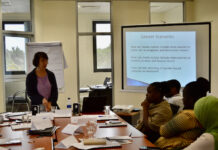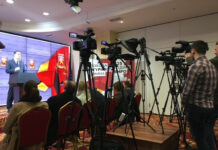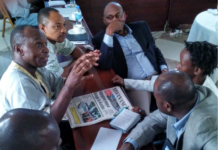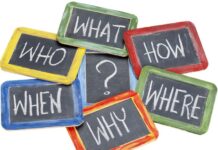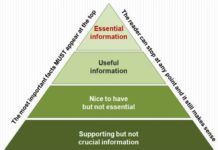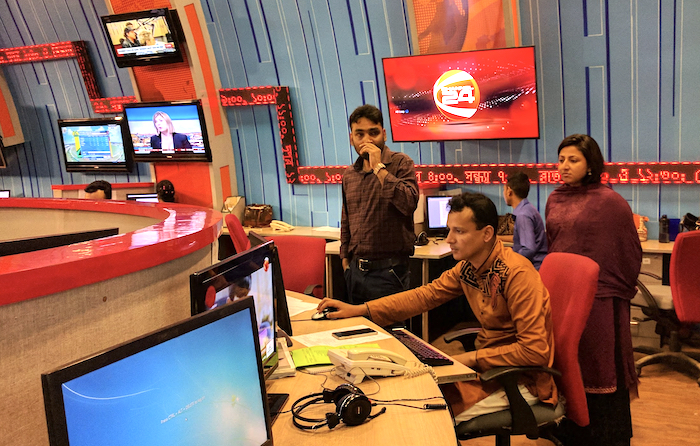
This is a short training module setting out the basics for creating a news package for TV. It’s been created for those starting out in TV journalism. We have embedded a pdf of our training presentation at the bottom of this module. You have the option to open it in full screen or download and print it. We hope you find it helpful. Let us know if you have any questions by using the contact form.
No pictures, no story
The golden rule for all TV news is “no pictures, no story”; pictures provide the “what” – words provide the “why”.
Storytelling in pictures
- Three skills are necessary: Reporting, camerawork and editing
- You need at least a basic knowledge of all three
- The guiding principle: let the pictures tell the story
First steps – what is the story?
- Who is the subject?
- What are they doing?
- Why, and what is their motive?
Research – the evolution of the story
- Find out what has happened
- Uncover the who, why, when, where, and how of the story
- Ensure you understand fully all the elements
Next steps – plan your news-gathering
- Be sure you know what story you want to tell
- Discuss it with your camera operator
- Decide what shots you are going to need
How the elements work
- The hook – grabs the attention
- The context – gives essential background
- The unfolding – the details of the new story
- The wrap – reiterates the main points or throws the story forward
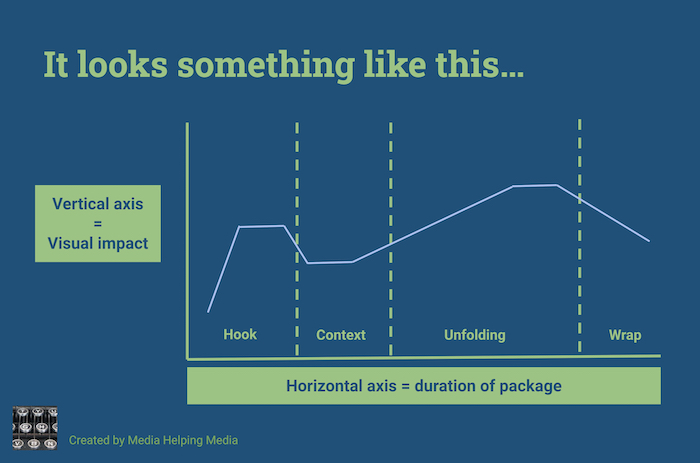
At the scene – get enough shots
- Anything showing action: arrivals, establishing shots, walking shots, noddies, cutaways, sitting-at-a-desk shots, interesting locations etc
- Film faces, especially those showing emotion
- Avoid getting to the edit suite without the shots you need
Interviews – what are we looking for?
- You will need only one or two short clips
- What will tell the story best? Emotion, analysis, an eye-witness account?
- Be neutral in your tone
Interviews – the skill is in the questions
- Don’t ask questions that can be answered with yes or no
- Don’t ask two questions in one
- Use the old favourites: who, what, when, where, why, and how
The stand-up – a.k.a. piece-to-camera
- Why are you doing it?
- How does it help with the story-telling or the editing?
- If it is really necessary, keep it short
Back at the office – consult and agree
- Make a shot-list
- Show your editor the pictures
- Agree on the treatment of the story
At the edit station – choose the pictures first
- Identify the shots which best tell the story
- Decide their optimum length
- Choose the right sequence (not necessarily in which they were recorded)
Editing dos
- Make sure each shot joins up smoothly with the next
- Keep points which attract the eye in the same area of the screen at changes
- Remove anything that can be cut without damaging the flow of the story
- Make a shot list of the finished edit
- Try to let the pictures tell the story
- Let the images speak and add as few words as possible
- With walking shots, end with them walking out of the picture if you can
Editing don’ts
- Don’t use the same shot twice in a package
- Don’t use jump cuts
- Don’t use the first question from an interview – start with the answer
- Don’t start or end a moving shot with a static shot
- If you cut away from an interview or a press conference, do not go back to it
- Don’t use noddy shots in edits; it could come across as agreement
- Don’t split clips and use them out of sequence
Packaging – putting it all together
- Understand – the story and the pictures you will need to tell it
- Capture – action, emotion, atmosphere, editing shots
- Discuss – agree the treatment with your editor
- Edit – use pictures to tell the story
- Script – add as few words as possible to complement the pictures



